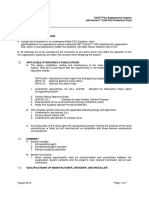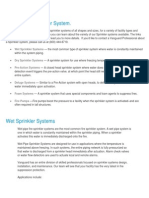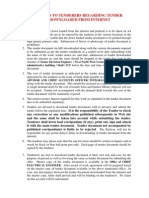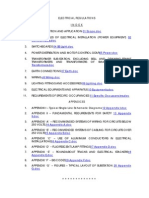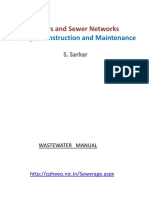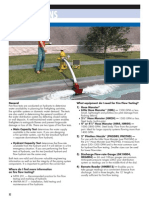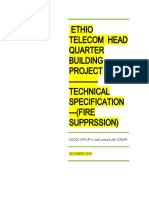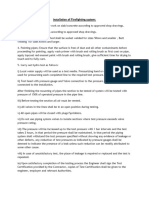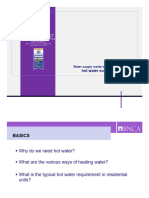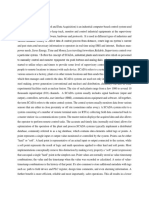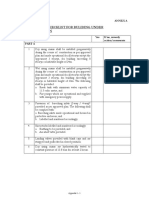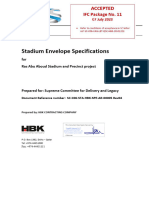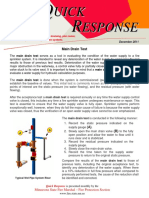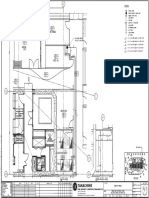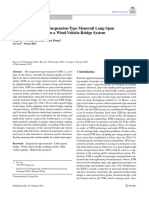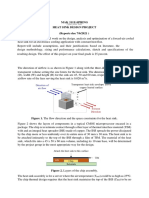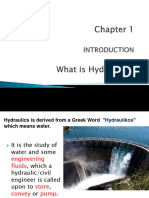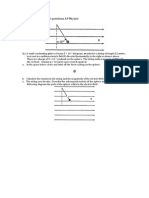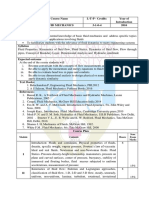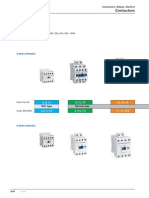e
Wet Pipe System Testing
from Liberty Mutual Property
RISK MANAGEMENT GUIDE
et pipe sprinkler systems have proven to be extremely reliable when properly maintained and tested. Two tests,
CONDUCTING AN INSPECTORS TEST
Inspectors test connections are usually piped from the end of the branch line most remote from the sprinkler riser. The test connection should be not less than 1-inch in diameter having a readily accessible test connection valve and terminate with a smooth bore corrosion-resistant orifice, giving a flow equivalent to one sprinkler of a type having the smallest orifice installed on the particular system. The discharge should be at a point where it can be readily observed. Where waterflow switches are located on each floor in high-rise or multi-story buildings to permit identification of the floor with water flow, an inspectors test connection may be located on each floor. Such arrangements are found with floor control valves, with the inspectors test valve located closer to the riser, but after the waterflow switch. This inspectors test connection arrangement will have a sight glass to observe the waterflow and the test connection will be piped to an interior drain. Inspectors tests (alarm tests) should be conducted quarterly on all systems.
the Main Drain Test and the Inspectors Test, are conducted to ensure sprinkler systems and sprinkler water flow alarms are operational and water supplies are not impaired. Main drain tests are conducted to help confirm that the proper water supply is available at the system riser, to detect changes in the water supply that may adversely affect sprinkler system performance, and to ensure drain valves are operational. The main drain test is critical in establishing a benchmark against which future tests can be compared. Inspector's tests (alarm tests) are conducted to ensure water flow detecting devices are operational, alarms are operational, and a signal is sent to and received by the off-premises monitoring station, if so connected.
BEFORE CONDUCTING TEST
Before starting any testing, notify the alarm monitoring company and the local fire department. Inform them you will be testing the sprinkler systems and alarms, and that you will contact them when the testing is completed. Failure to do so could result in the alarm company transmitting a false alarm to the fire department. Notifying the fire department of testing will also help to prevent false alarms caused by passersby who hear the alarms and call the fire department reporting the alarms operating. When contacting the alarm company, inform them that you will be calling back to verify the types of alarms received and the time of each alarm receipt. This information can be useful in determining which alarm signals, if any, failed to transmit to the alarm company and can expedite any needed repairs. It may also be necessary to notify all occupants of the building, including tenants and visitors, to prevent unnecessary building evacuation or interruption in their work. Once you have notified all interested parties that you will be testing the sprinkler systems and alarms, initiate the following procedures.
Figure 1: Inspectors Test Connection
From end of remote branch line
Readily accessible test valve
45 ell
Smooth-bore corrosion resistant orifice giving a flow equivalent to one sprinkler
Liberty Mutual Property
www.libertymutualproperty.com
�Figure 2: Wet Pipe Riser
Alarm Line Shut Off Valve RETARD CHAMBER
TO ALARM DEVICES
System Side Pressure Gauge Supply Side Pressure Gauge Clapper
Alarm Line Check Valve
Tamper Switch
2" MAIN DRAIN
Main Control Valve
FROM SUPPLY
Conduct an inspectors test using the following steps: 1. Check the area around the inspectors test discharge to determine that the water released during the test will drain away safely and not cause damage. 2. Open the inspectors test valve fully and allow the water to run for a minimum of 90 seconds or until the audible alarm on the premises operates. Record the time the valve was opened for confirmation with the alarm monitoring company receipt of the alarm. An audible alarm on the premises should operate within five minutes of opening the inspectors test connection and water flow begins. 3. Close the inspectors test valve. Record the time the valve was closed for confirmation with the alarm monitoring company receipt of the alarm. 4. Restore waterflow alarms on any local fire alarm control unit (panel).
1. Check the area around the main drain discharge pipe to ensure that water will drain away safely and not cause damage. 2. Unlock the main control valve so that it can be shut quickly if a problem develops during the test. If the main control valve is equipped with a tamper switch, close the valve two or three turns, then return the valve to the fully open position. This should send a tamper signal to the alarm company. 3. Record the static pressure on the supply side pressure gauge prior to the test. Open the main drain valve slowly until it is fully open. Allow the water to flow until the pressure stabilizes, then record the residual pressure using the same gauge. 4. Close the main drain valve slowly to avoid water hammer. When it is closed, record the static pressure on the supply side pressure gauge.
CONDUCTING A MAIN DRAIN TEST
The main drain is connected to the alarm check valve housing just above the valve clapper. Also referred to as a two-inch drain (named for the most common diameter pipe used for main drains), this connection is valved at a 90-degree angle and discharges to the outside of the building. Some risers do not have an alarm check valve and the main drain pipe is connected directly to the riser. Main drain tests should be conducted quarterly on all systems. Conduct main drain tests using the following steps:
DOCUMENTING TEST RESULTS
Document the results of the testing, including the main drain test pressures and whether or not local and remote alarm devices operated satisfactorily, on form PE1012B. Use one line for each system tested. This will allow for a direct comparison with previous tests to help identify problems.
INTERPRETING MAIN DRAIN TEST RESULTS
Main drain tests are intended to reveal changes in the water supply when the data from one test is compared against data from previous tests.
Liberty Mutual Property
www.libertymutualproperty.com
�There are no right and wrong main drain pressures. Benchmark pressures need to be determined through a series of regularly conducted main drain tests. These benchmark pressures (static, residual, and the difference between the two) are used in comparison to each successive test to identify changes in the water supply. Many factors can cause changes in main drain test results. Properly interpreting the change requires knowledge of the fire protection system water supply and experienced judgment. Slight changes (less than 5 psi) in the static and residual pressures are common. These are usually a result of normal small variations in water supply system pressures, gauge wear and tear, and difference in how and by whom the pressures were read. Daily and seasonal fluctuations in water supplies are common and may be in excess of 10 psi. Times of heavier water use (day vs. night and summer vs. winter) will cause pressures to drop. Pressure changes that are more significant or vary greatly are an indication of deterioration in the water supply. Such deteriorations are caused by obstructions, water main breaks, abnormally high increase in water supply demand, or closed valves. When the main drain test pressures vary greatly from the benchmark pressures, immediate determination of the cause and corrective action must be taken.
AFTER COMPLETING TESTING
After completing testing on all systems, contact the alarm monitoring company to confirm receipt of water flow alarms and valve tamper alarms. Confirm that all alarms have been reset. Inform them that testing is complete and to place the alarm system back in service. Notify the fire department that testing has been completed and request they respond to any automatic alarms received. If alarms failed to operate or other problems were discovered or identified during testing, make arrangements to get repairs completed. When alarms did not operate and repairs cannot be made immediately, a fire watch should be established until the alarm service is restored. If the alarms will be impaired for more than eight hours in duration or if more than one entire system is impaired, please notify Liberty Mutual Property at 800-541-5224. When all tests have been completed, lock all water supply control valves in the open position. Should you have any questions regarding Wet Pipe System Testing, please contact your Liberty Mutual Property Loss Prevention Consultant. References
National Fire Protection Association 13, Standard for the Installation of Sprinkler Systems National Fire Protection Association 25, Standard for the Inspection, Testing, and Maintenance of Water-Based Fire Protection Systems
Figure 3: Wet System Test Record
Liberty Mutual Property
www.libertymutualproperty.com
�smart & responsive
NOTES
More Risk Management Guides from Liberty Mutual Property. Contact your account representative or your local loss prevention consultant for copies.
Idle Pallet Storage Dry-Pipe Sprinkler Valve Heated Enclosure Applying Loss Prevention Principles Flammable and Combustible Liquids Dispensing Flammable Liquid Containers Keeping Sprinklers in Service: Testing and Maintence Keeping Sprinklers in Service: Dry Pipe Annual and Semi-Annual Tests Keeping Sprinklers in Service: Wet Pipe System Keeping Sprinklers in Service: Dry Pipe Drain Tests Keeping Sprinklers in Service: Valve Security Fire Pumps Winter Threats: Safe Work Practices on Snow-Covered Roofs Winter Threats: Freeze-Ups Fire Door Maintence Snow Loading and Roof Collapse Grounding and Bonding to Control Static Electricity Protection for Large Dip Tanks (Exceeding 150 gallons or 10 sq. ft. surface area) Flood Exposures Controlling Hurricane Losses
CONTACT US
For more information on our risk management studies and research, contact us at:
Liberty Mutual Property 20 Riverside Rd. Weston, MA 02493 Tel: 781-891-0230 www.libertymutualproperty.com









